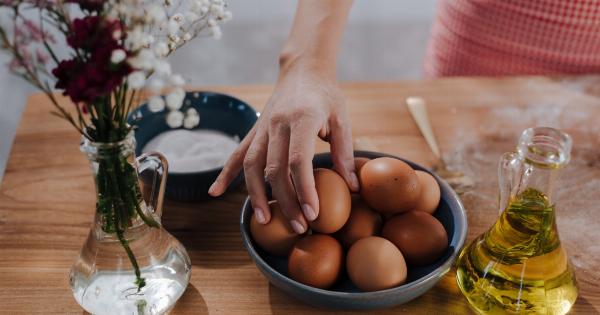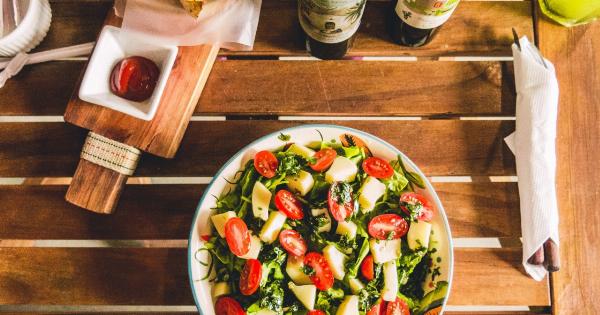Olive oil has been a staple in Mediterranean cuisine for centuries. Renowned for its health benefits and versatile use, it is not just a cooking ingredient but also a fundamental element in many skincare and haircare products.
This liquid gold extracted from the fruit of the olive tree is known for its distinct flavor, aroma, and numerous health advantages. In this article, we will delve into the magic of olive oil for cooking and explore its various culinary applications.
A Brief History of Olive Oil
The history of olive oil dates back to ancient times. The olive tree, scientifically known as Olea europaea, is native to the Mediterranean region, where it has been cultivated for over 6,000 years.
The ancient Greeks and Romans considered olive oil to be a symbol of wealth and used it for a wide range of purposes, including cooking, religious rituals, and even as a currency. Today, olive oil remains an essential component of Mediterranean cuisine and is enjoyed by people all over the world.
The Different Types of Olive Oil
Olive oil comes in various types, each with its unique characteristics and uses. Here are some of the most common types:.
1. Extra Virgin Olive Oil (EVOO)
Extra virgin olive oil is the highest quality and most flavorful form of olive oil. It is made using the first cold-press extraction method, which ensures minimal heat and chemical interference.
EVOO has a low acidity level and is rich in antioxidants, making it a healthier choice. It is ideal for drizzling over salads, dipping bread, and finishing dishes to add a burst of flavor.
2. Virgin Olive Oil
Virgin olive oil is slightly lower in quality compared to extra virgin olive oil. It has a higher acidity level, which may affect its taste and nutritional value.
Virgin olive oil is suitable for cooking, sautéing, and baking, as it can withstand higher temperatures.
3. Pure Olive Oil
Pure olive oil is a blend of refined olive oil and virgin olive oil. It is lighter in flavor and color compared to extra virgin and virgin olive oil. Pure olive oil is a versatile option for cooking, frying, and grilling.
4. Light Olive Oil
Contrary to popular belief, light olive oil does not mean it contains fewer calories or fat. It is simply a marketing term used to describe olive oil that is lighter in flavor.
Light olive oil undergoes extensive processing, including filtering and refining, to remove impurities and neutralize the natural taste. It is suitable for high-heat cooking methods like deep frying and can be used as a substitute for other cooking oils.
The Health Benefits of Olive Oil
Besides its delicious flavor, olive oil is packed with numerous health benefits. Here are some of the reasons why incorporating olive oil into your cooking can be beneficial:.
1. Rich in Healthy Fats
Olive oil is primarily composed of monounsaturated fats, which are considered heart-healthy fats. These fats help reduce bad cholesterol levels (LDL) while increasing good cholesterol levels (HDL), thereby promoting cardiovascular health.
2. Abundance of Antioxidants
Antioxidants found in olive oil, such as vitamin E and polyphenols, help protect the body against oxidative stress and inflammation.
Regular consumption of olive oil has been associated with a reduced risk of chronic diseases, including certain types of cancer and neurodegenerative disorders.
3. Anti-Inflammatory Properties
Olive oil contains oleocanthal, a natural compound known for its anti-inflammatory properties. Consuming olive oil may help alleviate symptoms of chronic inflammation and related conditions, such as arthritis.
4. Supports Digestive Health
The phenolic compounds in olive oil have been found to possess antimicrobial properties, which can help combat harmful bacteria in the gut. Olive oil also aids in the absorption of fat-soluble vitamins and promotes regular bowel movements.
5. Enhances Nutrient Absorption
Pairing olive oil with vegetables can enhance the absorption of fat-soluble vitamins, such as vitamin A, D, E, and K. The presence of healthy fats helps the body utilize these vital nutrients more effectively.
Culinary Uses of Olive Oil
Olive oil is a versatile ingredient that can elevate the taste and nutritional value of your dishes. Here are some popular culinary uses of olive oil:.
1. Salad Dressings and Marinades
Extra virgin olive oil is perfect for making homemade salad dressings and marinades. Its fruity and peppery notes can complement a variety of ingredients, enhancing the overall flavor profile.
2. Sautéing and Stir-Frying
When heated, olive oil maintains its integrity and does not break down into harmful compounds. It is an excellent choice for sautéing vegetables, stir-frying meats, and creating flavorful sauces.
3. Baking and Roasting
Olive oil can be used as a healthier substitute for butter or vegetable oil in baking. It adds moisture and a delicate flavor to cakes, bread, and pastries. It is also ideal for roasting vegetables, lending them a crispy exterior and a tender interior.
4. Dipping and Spreading
Combine extra virgin olive oil with your favorite herbs, spices, or balsamic vinegar to create a delicious dipping sauce for bread. Olive oil can also be spread on sandwiches and bruschetta for added flavor and richness.
5. Finishing Touch
Drizzle a bit of extra virgin olive oil over finished dishes to impart a delightful aroma and taste. It works wonders on soups, pasta, grilled meats, and even fresh fruits like strawberries.
Storing and Handling Olive Oil
To maximize the shelf life and preserve the quality of your olive oil, it is essential to store and handle it correctly:.
1. Storage
Keep olive oil in a cool, dark place, away from direct sunlight and heat sources. Exposure to light and heat can accelerate the breakdown of its beneficial compounds and reduce its flavor.
2. Container
Opt for a dark glass bottle or a canister that protects the oil from light. Avoid storing olive oil in plastic containers as they may introduce toxins and affect its flavor.
3. Airtight Seal
Make sure the bottle or container has an airtight seal to prevent the oil from oxidizing. Oxidation can lead to rancidity and a loss of quality.
4. Use Clean Utensils
When using olive oil, always use clean utensils to prevent contamination. Avoid dipping used cutlery or fingers directly into the bottle, as it may introduce moisture and impurities.
The Beauty Benefits of Olive Oil
Aside from its culinary uses, olive oil is renowned for its beauty benefits. Here are some ways olive oil can enhance your skincare and haircare routine:.
1. Moisturizer
Olive oil is a natural and nourishing moisturizer. Its high content of vitamins A, D, E, and antioxidants helps hydrate and soften the skin, making it an excellent choice for dry or rough patches.
2. Makeup Remover
Use olive oil as a gentle yet effective makeup remover. It can dissolve even waterproof mascara and leave your skin clean and moisturized. Simply apply a small amount to a cotton pad and gently wipe away makeup.
3. Hair Conditioner
Olive oil can deeply condition and nourish your hair. Warm up a few tablespoons and apply it to your hair, focusing on the ends. Leave it on for 30 minutes or overnight for an intensive treatment, then shampoo and condition as usual.
4. Cuticle Care
Rubbing a small amount of olive oil onto your cuticles can help keep them healthy and moisturized. It can also soften dry, cracked skin around the nails.
Conclusion
Olive oil is indeed a magical ingredient in the culinary world. Its rich flavor, health benefits, and versatility make it an essential component in any kitchen.
From boosting the taste of your dishes to improving your skin and hair health, olive oil is a true multipurpose gem. So, indulge in the magic of olive oil and unlock its many culinary and beauty secrets.































